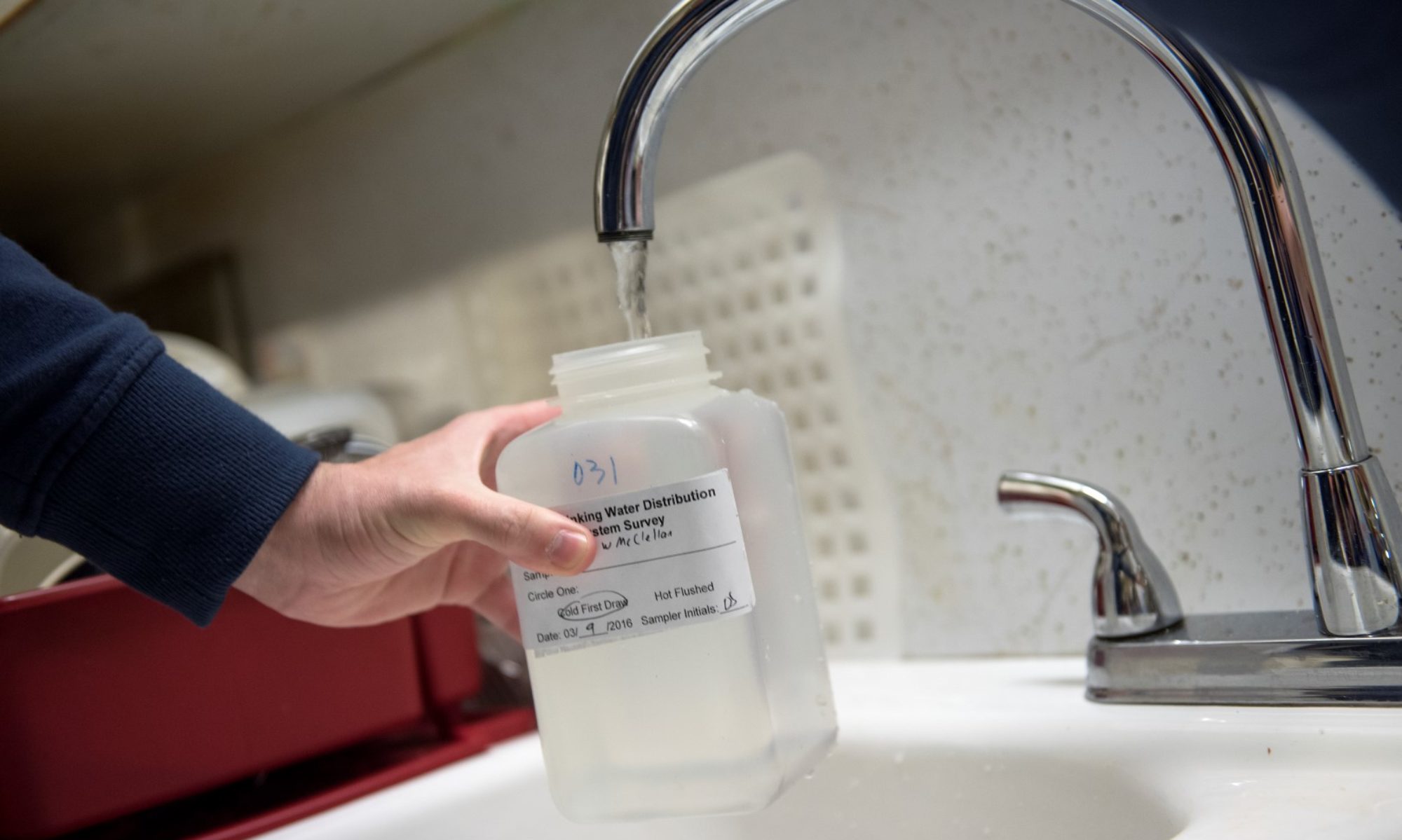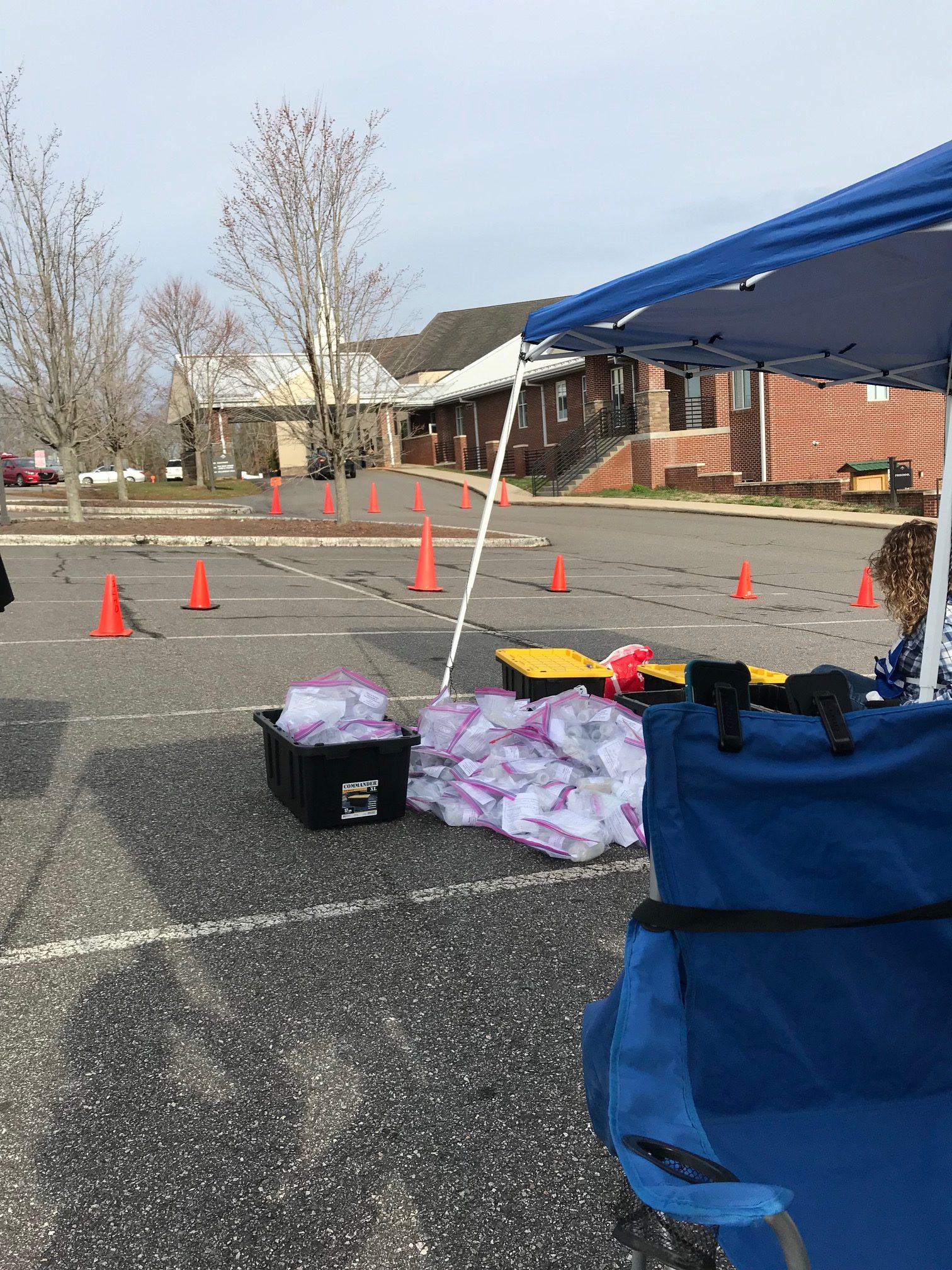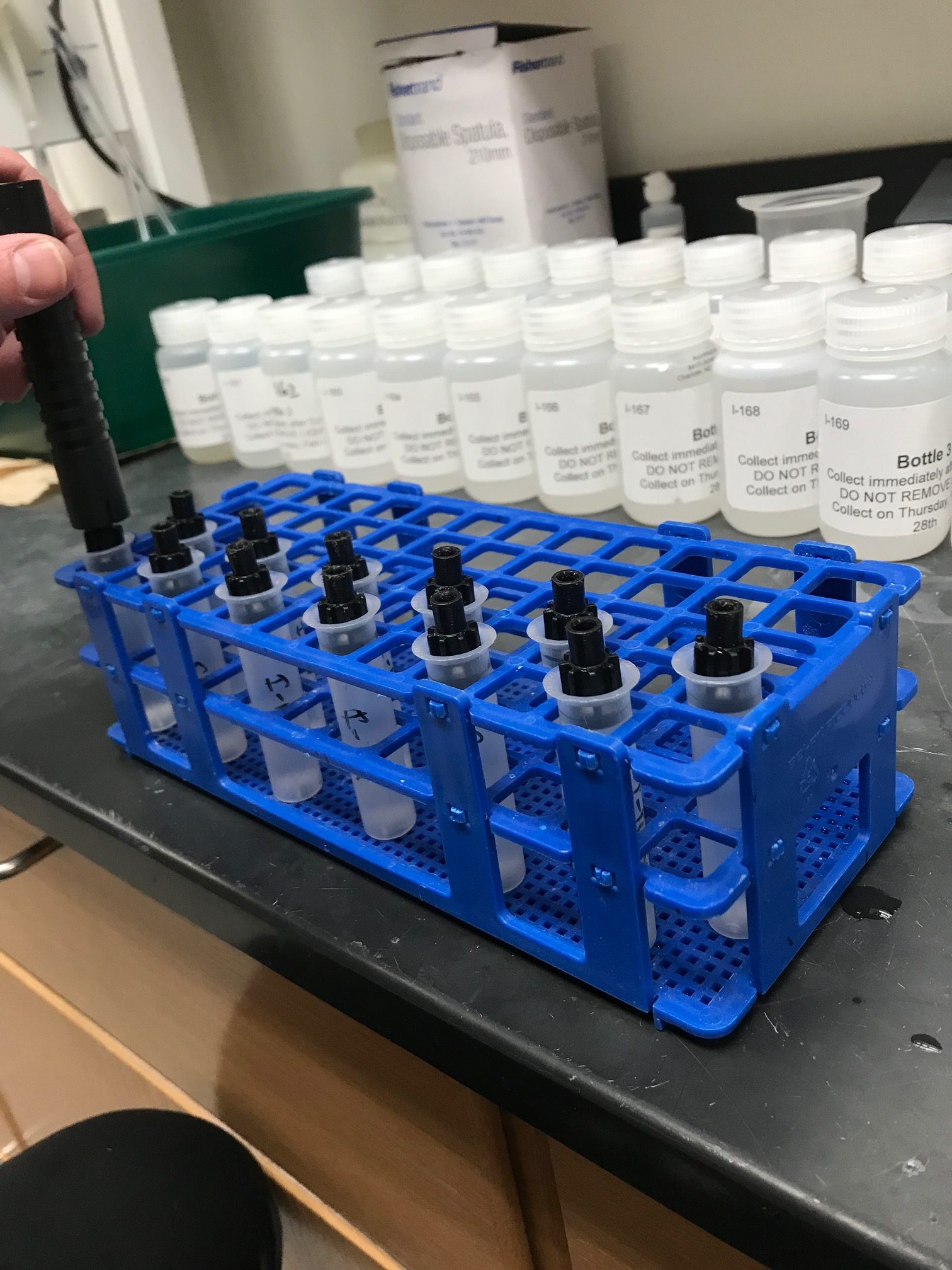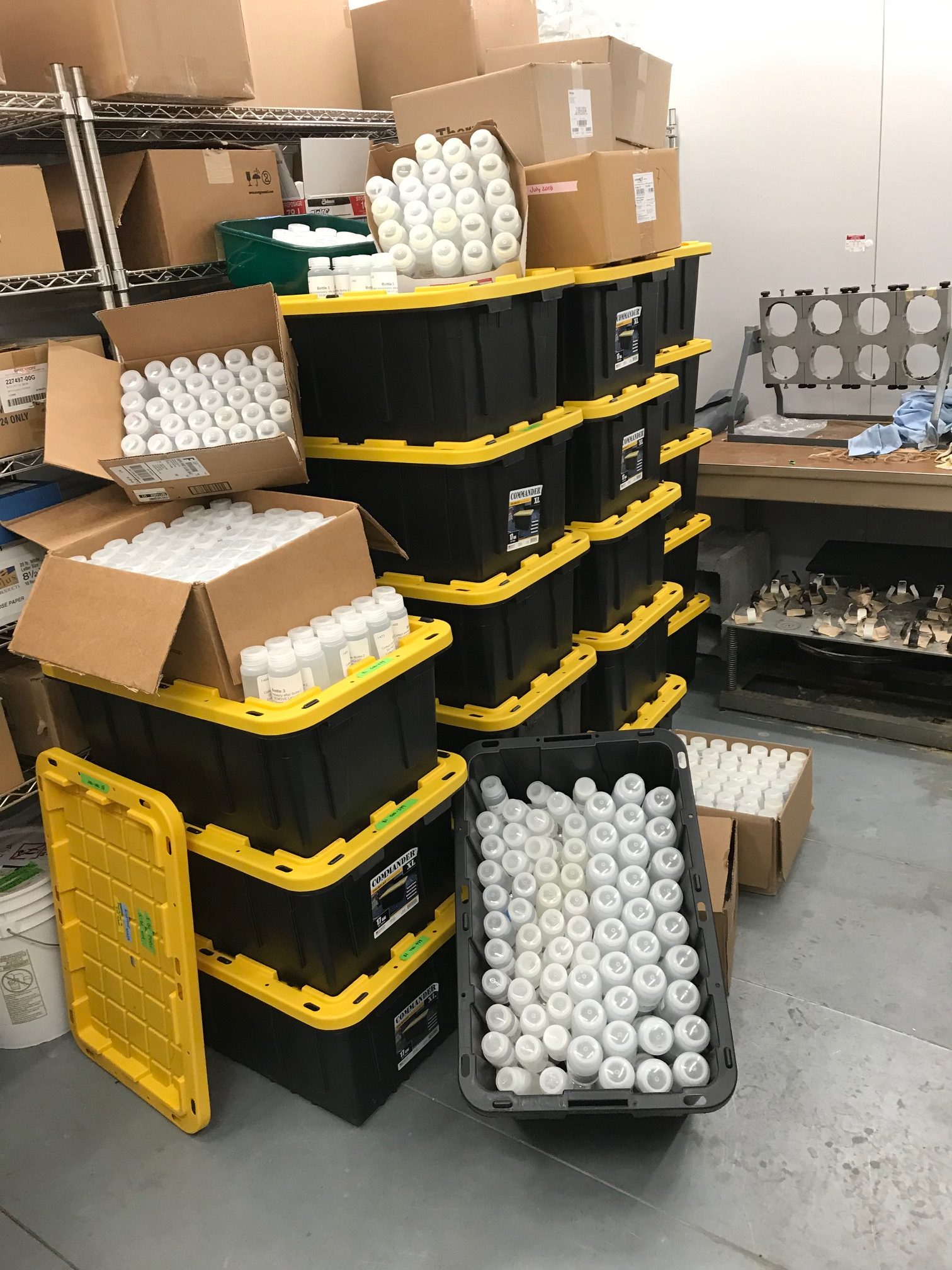In February 2019, Virginia Tech and the Institute for the Environment at the University of North Carolina at Chapel Hill partnered with the Iredell Health Department to provide free well water testing to private well users. A total of 786 well water sampling kits were returned for analysis (out of 931 that were distributed; 84% return rate). The goals were to measure lead in drinking water from private wells where well users are solely responsible for detecting and controlling water lead risks, and to examine well water quality and recovery after Hurricanes Florence and Michael. This sampling event was funded by the United States Environmental Protection Agency (US EPA) and the National Science Foundation (NSF).
Here are some photos from our February 2019 sampling event:
The following conclusions are based on a preliminary evaluation of the samples collected by participating well users.
- Of the 786 homes sampled, 7.5% of first draw samples exceeded the US EPA lead action level of 15 μg/L, which applies to regulated public water supplies. Elevated levels of copper above the US EPA copper action level of 1.3 mg/L were also observed in 10.8% of first draw samples. Although the US EPA Lead and Copper Rule does not apply to private wells, some of the higher levels of both lead and copper are concerning. Information about contaminants from household plumbing corrosion was assessed by letting the water sit stagnant for at least six hours, and then collecting the ‘first draw’ sample from the kitchen tap. After flushing water from the pipes for 5 minutes, less than 1% of homes had lead and copper concentrations above the action levels — this further confirms these contaminants were from plumbing.
- Other contaminants in well water come from the groundwater. Less than 2% of samples exceeded the US EPA health-based standard for uranium, and no samples exceeded the US EPA health-based standards for fluoride or total chromium.
- In North Carolina, the NC Department of Health and Human Services has set a health goal of 0.07 µg/L for hexavalent chromium, which is a concentration that is protective of people ingesting the water over a lifetime. There are no US EPA or NC Ground Water standards for hexavalent chromium. About 79% of homes had hexavalent chromium above the NC health goal, and the average concentration was 0.84 µg/L. Compared to hexavalent chromium measurements in private wells from other parts of NC and public drinking water supplies in the US, the Iredell hexavalent chromium test results do not appear unusually high.
- The NC Department of Environmental Quality has set an Interim Maximum Allowable Level of 0.3 µg/L for Vanadium. There is no US EPA or NC Ground Water standards. About 86% of homes had vanadium above the Interim Maximum Allowable Level. These vanadium test results from Iredell are similar to what we have measured in surveys of drinking water from schools outside of North Carolina.

You can view a recording of our press conference held on April 18 2019 discussing these findings below:
You can view our press conference slides here:
For questions about this study, please contact Kelsey Pieper with Virginia Tech (kpieper@vt.edu; 518-928-0177), Andrew George with Institute for the Environment (andrewg@unc.edu; 919-966-7839), or Brady Freeman with the Iredell Health Department (bfreeman@co.iredell.nc.us; 704-878-5358).
Disclaimer: Although the information in this document has been funded by the United States Environmental Protection Agency and National Science Foundation, it may not necessarily reflect the views of these organizations and no official endorsement should be inferred.




